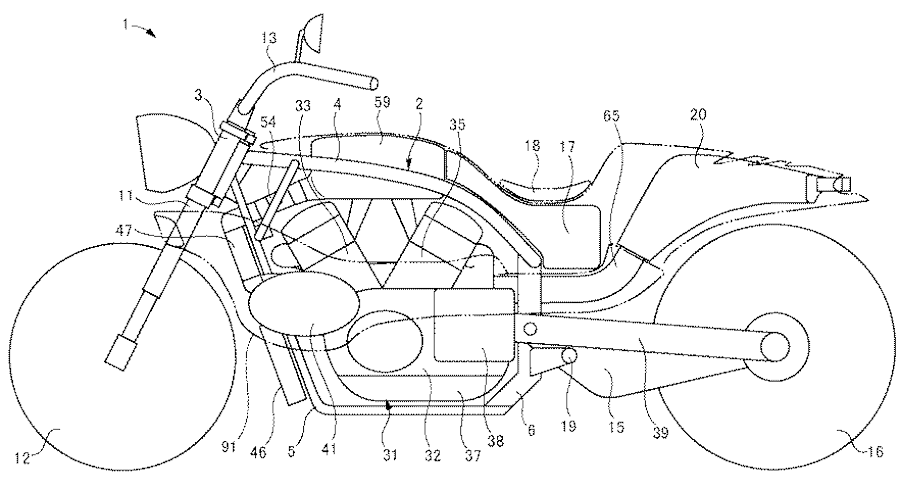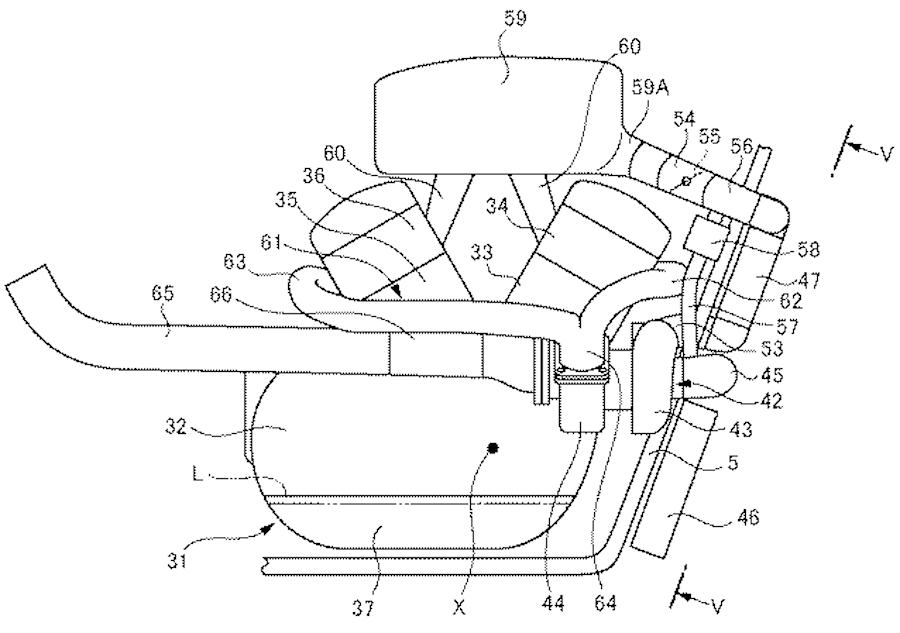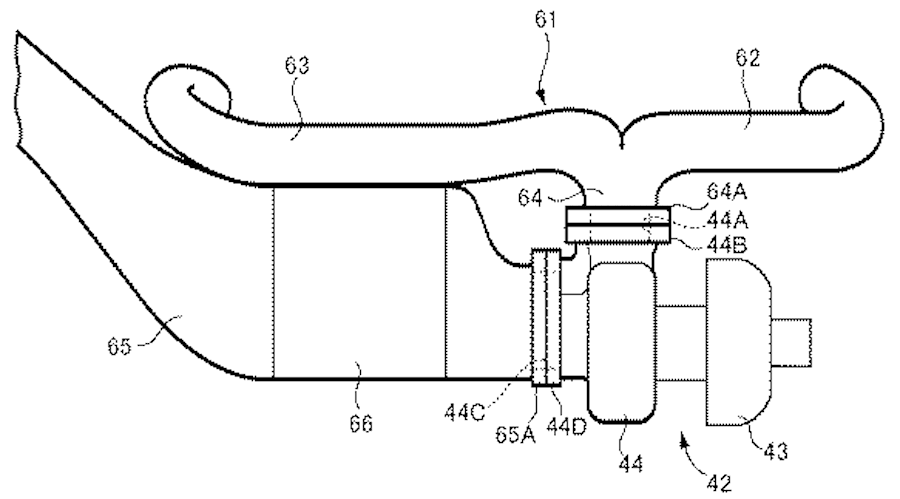It’s out! Forget efficient and green, Suzuki’s gunning for all-out grunt!
You might have thought the future generation of turbocharged bikes will be small, efficient and sporty, but patent applications reveal Suzuki is working on a big turbo V-twin cruiser that takes its inspiration from two-wheeled drag racers.
While already at the forefront of turbocharged motorcycle development, with its soon-to-be-revealed production machine based around its XE7 prototype parallel-twin turbo engine, the new cruiser is a different proposition entirely.
The XE7 engine, shown two years ago, was a development of the 588cc parallel twin created for the Recursion concept bike back in 2013. It’s relatively small, using the turbo to recoup performance to levels of a larger-capacity machine while reaping the emissions and efficiency benefits of its small capacity. However, the new cruiser is clearly aimed at outright brute power and torque – combining a large V-twin engine with a single, enormous turbo.
To dispel doubt about this being a serious project, Suzuki has gone to the cost and effort of filing no fewer than four separate patent applications around the design. The patents also include some specifics about the bike itself, hinting there’s probably a real prototype hidden somewhere in Suzuki’s R&D department.
While we can’t be sure whether the Suzuki will emerge as a full production bike or merely a concept, the effort to create enough exhaust volume to make it quiet and give space for a large catalytic converter suggest there’s at least one eye on production. And the fact that Suzuki has included heat shielding in the patents tells us this bike is destined to be ridden at least a bit.
In the meantime, this is what we know.
Simplistic Patent Application sketches show a car-type turbo, but a more sophisticated, cooled unit is expected
A whopping great turbocharger
Bolted to the right-hand side, exhaust headers from both cylinders are fed into it, spinning the turbine section of the enormous turbocharger. The turbo’s compressor sucks air through a short intake tube from an oval-shaped air cleaner on the right-hand side of the bike before squeezing it and forcing it into an intercooler mounted above the engine’s main water radiator. From there, the cooled, compressed gas goes into a plenum chamber mounted above the engine’s throttle bodies.
Chassis
The frame is a tubular steel perimeter chassis, very much like the M109R’s chassis. The engine is a water-cooled V-twin, again like that of the M109R.
The bike’s overall silhouette is clearly in line with the existing M109R. It shares the same shape seat unit and chassis, and the patent’s text confirms it’s a shaft-drive machine.
Power
Power and torque will be monumental. One hint to the expected big numbers is the beefed-up swingarm, which has underslung bracing as used on MotoGP bikes. Although the patent drawings don’t show it, the swingarm is connected to a monoshock, while the fork is clearly a USD affair, as you’d expect on a high-performance bike.
Styling
A more detailed second patent reveals how a pair of distinctive side panels will run the full length of the bike. These start with air intakes at the front, where they extend beyond the leading edge of the fork legs above the front wheel, and run all the way back to a point where they meet the bike’s tail unit. Although symmetrical, the panels both serve different jobs.
The left-hand panel is the main engine air intake and serves to cover the air filter, while its rear section is purely cosmetic. The right-hand panel, shaped identically, brings cooling air to the turbocharger, and covers the turbo and all the exhaust pipework where it runs along the side of the bike before tucking back into that seat-mounted silencer. The right-hand cover also hides extensive heat-shielding that stops the red-hot turbo pipework from burning the rider’s right leg.
Exhaust
Having done their job of spinning up the turbo, the exhaust gasses go straight backwards to a large silencer under the seat unit. This effectively ensures the bike is a single-seater – the patent clearly shows the seat unit is heavily vented to release heat from that exhaust.
Although quite simple, the drawings also give some glimpses of the bike’s styling. Those exhaust cooling vents, for instance, and the slot-shaped exhaust outlet poking from the rear bodywork.

By Ben Purvis


